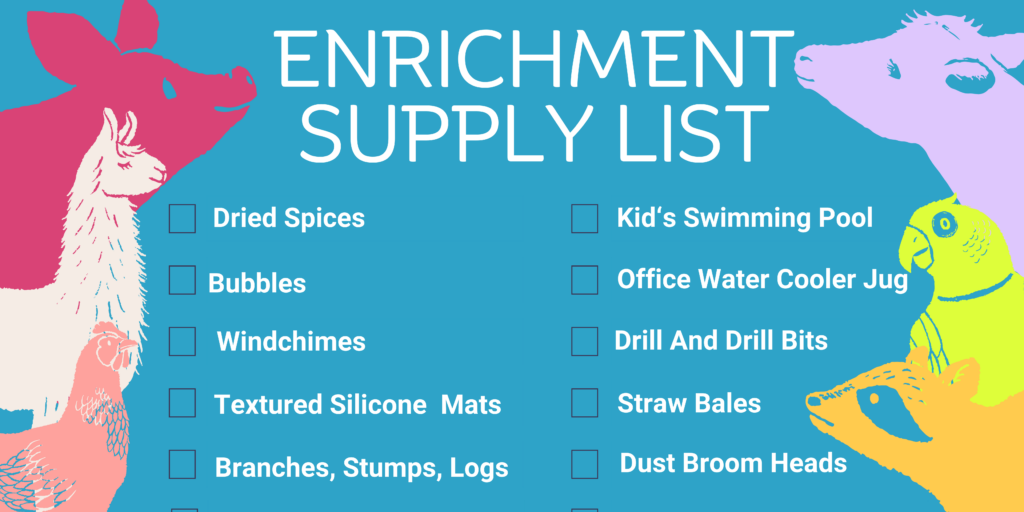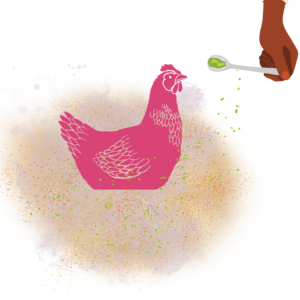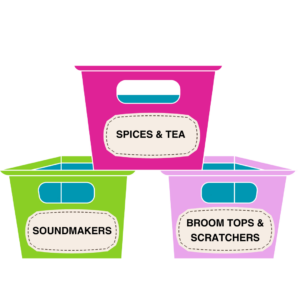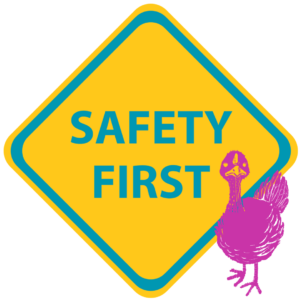
If you have read some of our resources, you likely came across one mentioning enrichment. We have a number of existing resources about the importance of enrichment, the types of enrichment, easy enrichment ideas, enrichment schedules, safety considerations, and even species-specific enrichment ideas! If you are reading this resource, it looks like you are preparing to offer enrichment to residents at your sanctuary. Fantastic! Although often seen as an afterthought, enrichment is an important part of general care. We know it sounds like a lot on top of an already busy care routine. Maybe you don’t know where to start. That’s okay; we also have a resource to help with that. In this particular resource, we will focus on one particular thing that can be a big help in getting enrichment programs going. Having the supplies!
Have you ever found a rare moment during your day when morning breakfast and medicating routines went smoothly, and no unforeseen problems arose? These elusive moments of being all caught up are great times to implement enrichment plans. But you can’t take the next step if you don’t have a list of approved ideas and plans. Even if you have a list of approved enrichment and implementation plans, you can’t provide them unless you have the supplies ready. This can continuously delay the incorporation of enrichment into the lives of residents, and, as we have covered, enrichment is an important aspect of general care. This brief resource will provide a list of items to have on hand to ensure residents experience enriching, dynamic days at your sanctuary! It will also touch briefly on related topics, such as financial considerations and the importance of recordkeeping. Let’s jump in!
Enrichment Supply List
There are many possibilities regarding enrichment and what items you should keep for a resident enrichment program. What makes sense for your sanctuary will depend greatly on the species you care for. The following list is meant to get you started with some enrichment items that can be interesting for many different species. However, if you mainly care for rabbit and cavy (guinea pig) residents, you probably don’t need to keep a large water cooler jug or a chicken swing on hand. Take this list as an example and keep what makes sense for you and your residents. Then, create your custom list!

- Dried spices (oregano, dill, basil, cinnamon, rosemary, sage, etc…)
- Food extracts (vanilla, orange, almond, peppermint, strawberry, coconut etc…)
- Essential Oils (lavender, rose, geranium, ginger, lemongrass, valerian)
- (Never directly apply oils to skin or drinking water without veterinary direction or place in an area where residents cannot remove themselves from the scent.)
- Herbal tea bags (peppermint, ginger, chamomile, lemon balm, etc…)
- Safe children’s toys (xylophone, pinwheels (out of reach), wiffle balls for smaller residents, soccer balls, basketballs, exercise balls, or jolly balls for larger residents, stuffed animals, large baby teething toys for bird residents, and other toys that cannot be swallowed or pose a risk.
- Swing
- Mirror (careful with glass; acrylic may be safer)
- Disco Ball
- Old CD’s
- Suncatcher
- Cardboard boxes (free of staples, toxic tapes/glues)
- Newspaper
- Thick and thin, strong, nontoxic string
- Mop head
- Broom head
- Sand
- Target (for positive reinforcement sessions)
- Extra water bowls and buckets
- Diffuser
- Sprinkler
- Step ladder
- Straw bales
- Old logs, stumps, and branches
- Old plastic containers/buckets that can fit into a freezer
- Children’s swimming pool
- Temporary fencing
- Stocks of treats
- Buckets with lid
- Office water cooler jug
- Toilet paper rolls
- Paper towel rolls
- Bubbles
- Bubble machine
- Silicone licking mats (psst…you can use silicone potholders with different textures)
- Scratching Pads in different sizes
- Bells in various sizes
- Windchimes
- Large Kong Toys
- Plastic tubs
- Plastic water bottles
- Tools
- Drill
- Hammer
- Nails
- Screws
- Drill bits
- PVC pipe of different circumferences + end caps
- Duct tape
- Rope and thick string
- Chain
- Pruning sheers
- Zip ties
- Large nuts and bolts
- Shovel
- Post digger
- Carabiner
- Notebook/whiteboard
You will notice that this list contains items for enrichment but also tools you will need to have on hand to make or secure the enrichment. These tools can broaden the range of items and activities you can provide. Just ensure you are trained to properly use them and secure enrichment for residents to prevent injuries to yourself or others. Remember, this list is hardly exhaustive, and we encourage your care team to brainstorm creative ways to enrich the lives of your residents. Based on the supplies you have on hand, you can provide many enrichment activities; many on this list can work alone or in conjunction with other items. Let’s look at a couple of examples of enrichment activities that can be made from items on the list above.
Examples Of Enrichment Activities
Browsing Tree
For: Small ruminant, camelid, and donkey residents. It could even work for some bird residents when adjusted for size.
What you need: PVC pipe, post digger and post, drill, drill bit and pruned branches
Intention: Increase time spent foraging for food (natural behavior), getting onto hind legs for goats, pique curiosity, provide interesting scents and textures, and provide novelty.
Time needed: 1 hour initial prep time. Once the post has been placed and the holes drilled into the PVC pipe at various intervals, it should only take 10-15 minutes to cut small branches or skewer produce onto them and stick them through the holes on the PVC pipe.
Advanced option: Take a PVC pipe and put caps on the ends. The length of the tube can be a foot long or longer. Drill a handful of holes in the side of the tube, and it becomes a food dispenser. You can attach these dispensers to a fence or post, put leafy greens through them, and hang them at different heights to stimulate natural browsing behaviors. You can even make PVC “tree branches” and hang them from a ceiling, goat furniture, or an actual tree!

Spa Bath
Highly Pathogenic Avian Influenza
Due to the growing danger of HPAI, great care must be taken to ensure bird residents do not come into contact with wild birds or water, food, or other resources that wild birds can access. In the case below, this means ensuring the dirt and herbs used have not come into contact with wild birds. This also means that you may have to get extra creative in enrichment to avoid potential transmission. Learn more about HPAI and how you can protect bird residents here.

For: Anyone who loves a good roll in the dirt! The scent and novelty can still enrich other residents who don’t necessarily want to roll in it.
What You Need: A nice loose patch of dirt/dust, resident-safe aromatic dried (or fresh) herbs or flowers. (Depending on the environment, you might need a shovel or dirt brought into the living spaceThe indoor or outdoor area where an animal resident lives, eats, and rests..)
Intention: Encouraging natural behaviors, engaging the senses, providing novel experiences, and encouraging exploration.
Time needed: Minimal- 5 minutes
This is the ultimate deluxe package! Mix resident-safe aromatic dried herbs (basil, thyme, dill) or flowers (violets, rose petals) for spa baths into their dust bath. The ideal way to approach this is to offer two different baths, one without additional herbs. Another option is to add a small amount of vanilla, almond, or other extracts you might find in your kitchen cabinet, mix it up in the dirt, and let it dry before giving them access—this way, they can choose which path they prefer and those that don’t like it have another option.
Bring Enough For The Whole Class
Always provide multiple enrichment opportunities/items to lessen potential conflict. Having a single enrichment item in an area can cause conflict among social groups. It can lead to only some residents getting the enrichment and others being displaced and bullied. Resources such as water, hay, and shade should be available separately from the enrichment area to ensure residents can always access them. So, if you offer herbal tea-flavored water to a small group of sheep residents, be sure this is made available away from their regular water and provide multiple buckets.
Storage And Organization

A place to organize and store enrichment can make implementing a successful enrichment program easier. Discuss the best place to keep enrichment supplies with your care team. Once a space has been designated for them, organize it, clearly labeling the bins, cabinets, or boxes for their supply type. You might have a cabinet with dried herbs and spices or a box full of bells, wind chimes, and other auditory enrichment items. Labeling these storage spaces will help you move quickly and have a smooth enrichment prep. Organizing enrichment supplies can make a big difference when there never seems to be enough time in the day. This will also help you instruct other caregivers and volunteers on where to find and how to prepare enrichment items for residents. If the enrichment supplies are edible or might otherwise attract wildlife, be sure the bins are securely stored to avoid any conflict or spread of disease.
Safety Considerations
The list above provides the necessary “ingredients” to create different enrichment items and activities. However, what is appropriate for a duck resident may not be appropriate for a pig resident. Additionally, every resident is an individual and may have certain illnesses, injuries, or even size or breed differences that make a form of enrichment unsafe for them. As always, please discuss any enrichment ideas with your veterinarian if you are uncertain about the safety risk to residents. We highly recommend you read our resource regarding safety concerns and enrichment if you haven’t already.

Resident safety isn’t the only consideration. Your safety is important, too! Do not attempt to use tools you aren’t properly trained on or put yourself in high-risk situations when building or implementing enrichment. So be sure you have all the appropriate tools and a solid understanding of what is needed, and double-check that all safety measures are in place before beginning.
Financial Considerations

The quantity of supplies you need depends on the size of your resident population and how quickly you go through supplies. Building up a stock of enrichment items doesn’t have to be expensive. Tea, herbs and spices, cardboard boxes and paper bags, old branches and stumps, wiffle balls, buckets, mirrors, and more can be obtained cheaply or even for free! Check out our resource on inexpensive enrichment options for more ideas. However, there remains a financial investment for a well-stocked enrichment program. This should be worked into the sanctuaries annual budget. It is also a great opportunity to connect with your community and request donations.
And, of course, it isn’t a one-time investment. As supplies dwindle, you will need to restock enrichment items. Keeping a record of enrichment for residents can help show what is used most and help you decide what items should be purchased in greater or lesser numbers.
Observation And Recordkeeping
Some basic information to record when you offer residents enrichment includes the type of enrichment provided, the date and time enrichment was provided, who provided enrichment, and which individuals/groups received enrichment. In addition to this information, it is important to make observations of residents engaging with the enrichment and take notes. Every resident is an individual, and they may have different responses to the same enrichment. Different species can have different reactions to certain types of enrichment as well. Some species have a keener sense of hearing, sight, or other differences that can affect how enrichment is perceived. Watch how the enrichment affects group dynamics as well as individual residents. Be sure to make notes of any reactions and when their level of interest seems to subside. If you feel unsure what to record, ask yourself these questions:

- Did the enrichment go as planned?
- Did it meet the goal?
- Are there adjustments you might recommend for future use of the enrichment?
- Did you observe any issues with the item or activity that might cause safety hazards, and should future enrichment with the item/activity be adjusted or stopped completely?
- Did someone have a particularly positive response? A particularly negative response?
- Did they seem disinterested, scared, excited, or curious?
- How long did residents interact with it?
- Are we low on the enrichment supply? (Communicate this with other staff so you don’t run out!)
All this information will help your care team communicate effectively and design the best enrichment program for your residents. Remember, it’s only enrichment if the resident finds it enriching!
Now that you have a starter list to get your enrichment program going, meet as a care team to discuss what makes the most sense for your sanctuary and residents regarding enrichment supplies. There are so many possibilities; you may think of something that isn’t on this list. If you do, we’d love to hear your enrichment ideas to share with others!








